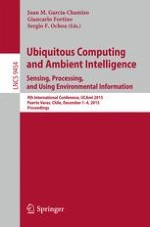2015 | OriginalPaper | Buchkapitel
Virtual Touch FlyStick and PrimBox: Two Case Studies of Mixed Reality for Teaching Geometry
verfasst von : Andrés Ayala, Graciela Guerrero, Juan Mateu, Laura Casades, Xavier Alamán
Erschienen in: Ubiquitous Computing and Ambient Intelligence. Sensing, Processing, and Using Environmental Information
Aktivieren Sie unsere intelligente Suche, um passende Fachinhalte oder Patente zu finden.
Wählen Sie Textabschnitte aus um mit Künstlicher Intelligenz passenden Patente zu finden. powered by
Markieren Sie Textabschnitte, um KI-gestützt weitere passende Inhalte zu finden. powered by
